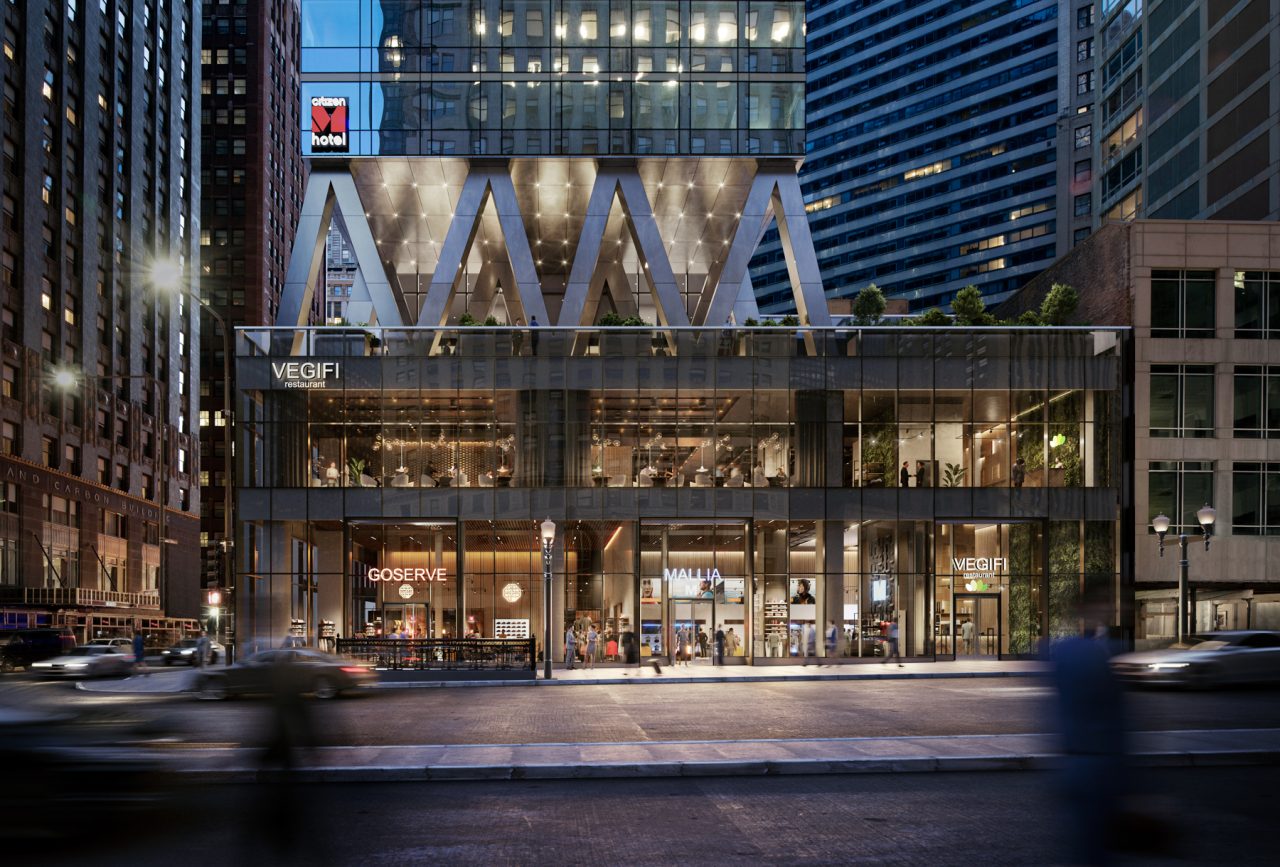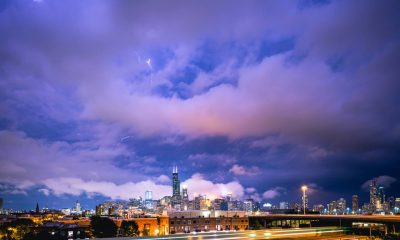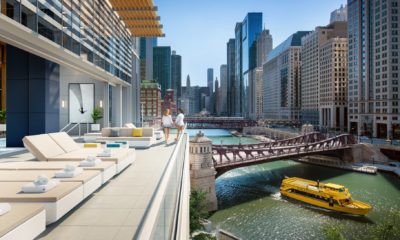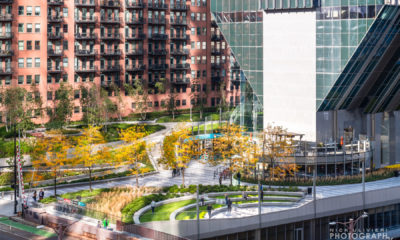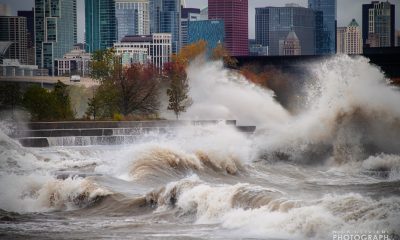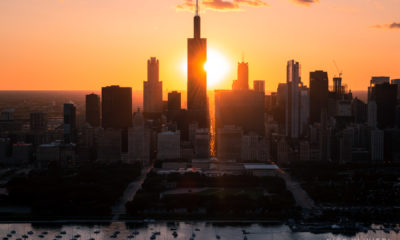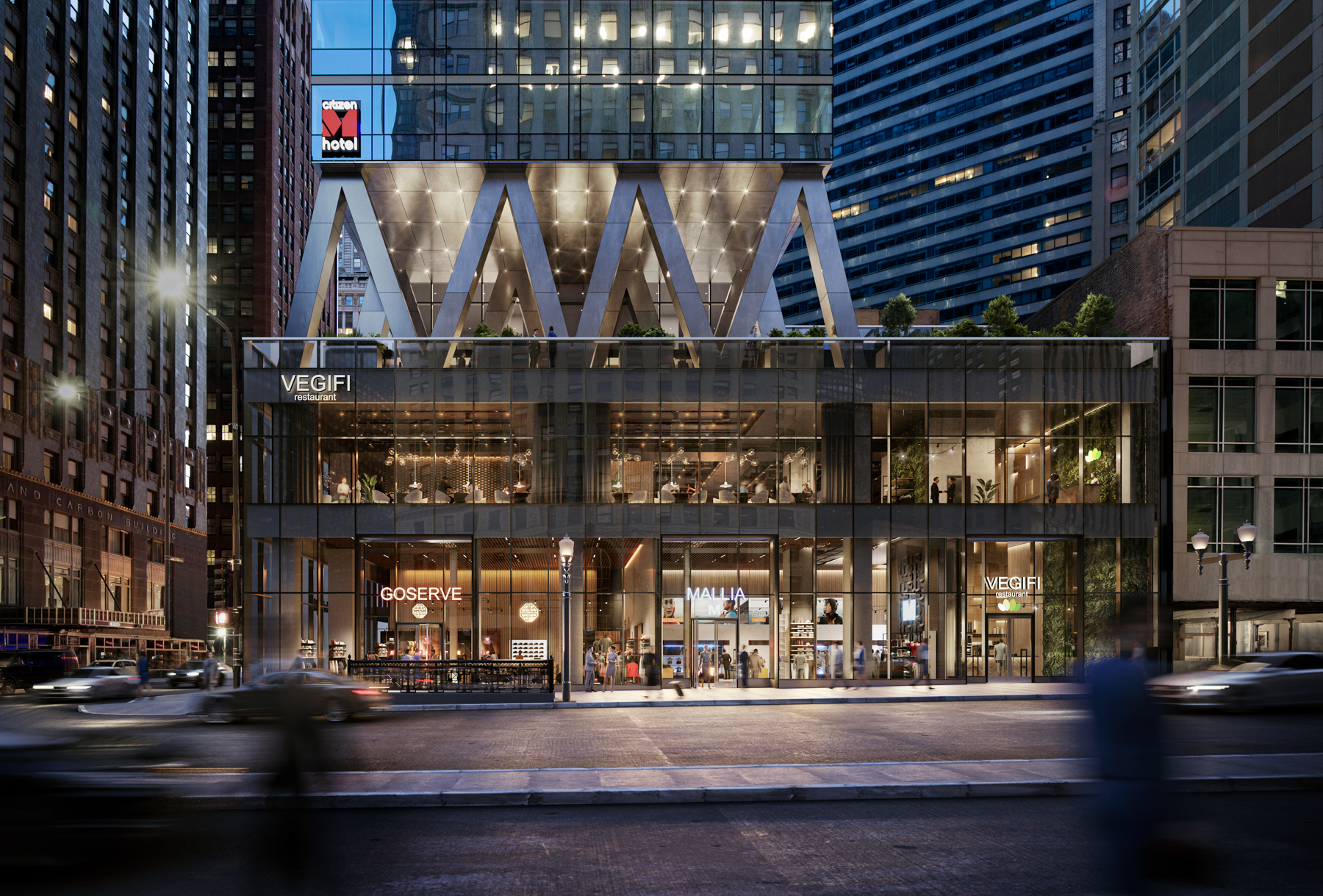
300 N Michigan Avenue Rendering
This past summer, I worked on a pretty cool rendering project. My friends at Sterling Bay and Binyan Studios tasked me with photographing the retail elevation of 300 N Michigan Avenue; a bKL Architecture LLC designed mixed-use tower. The 47-story glassy skyscraper topped off at its final height of 523 feet just this fall. Even now, just as when this project was commissioned, the building is still under construction. Especially at ground level. But in order to start marketing the tower, the development team needed a realistic image of how the completed tower’s retail space would appear. That’s where I came in.
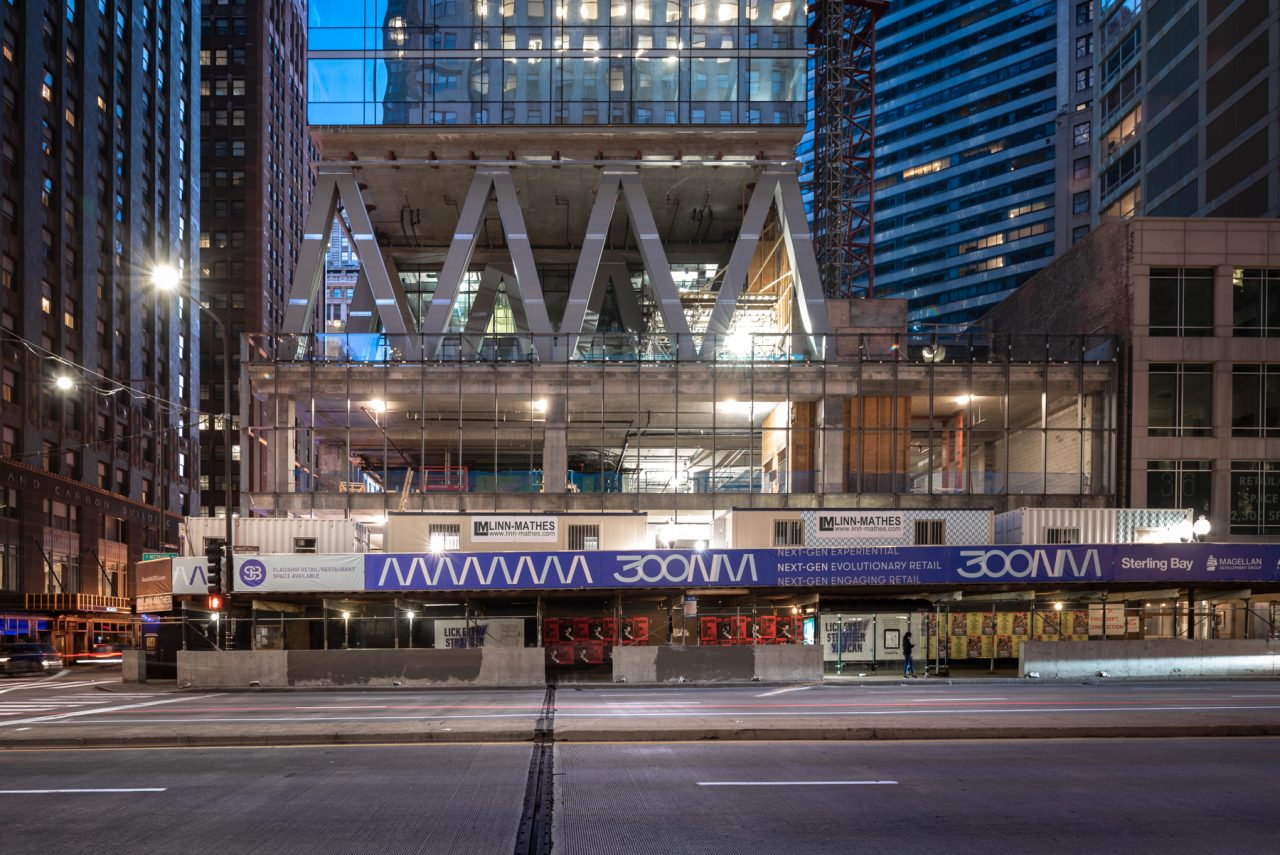
The goal of the photoshoot wasn’t to photograph the final structure, clearly. Instead, my job was to photograph the current structure within the context of the Michigan Avenue streetscape. To put another way, Binyan Studios needed a high-quality image of the background, foreground, and surrounding buildings to set the scene for a rendering – the feature image of this blog post.
Photographing backgrounds for renderings are some of my favorite projects. While renderings are digitally created worlds, the final product often incorporates elements from actual photographs. So when my images are part of that process, it’s exciting to see the final composite – it’s as if my photos time traveled.
The parameters were very specific. I captured the needed frames at a very specific time of day and position in space to match the perspective of the rendering already being modeled digitally. The final rendering you see uses multiple images of mine. I delivered a number of unedited frames to Binyan taken over the course of blue hour. Binyan then blended together the favored elements and light qualities from various frames to create the final rendering.
The Reflection
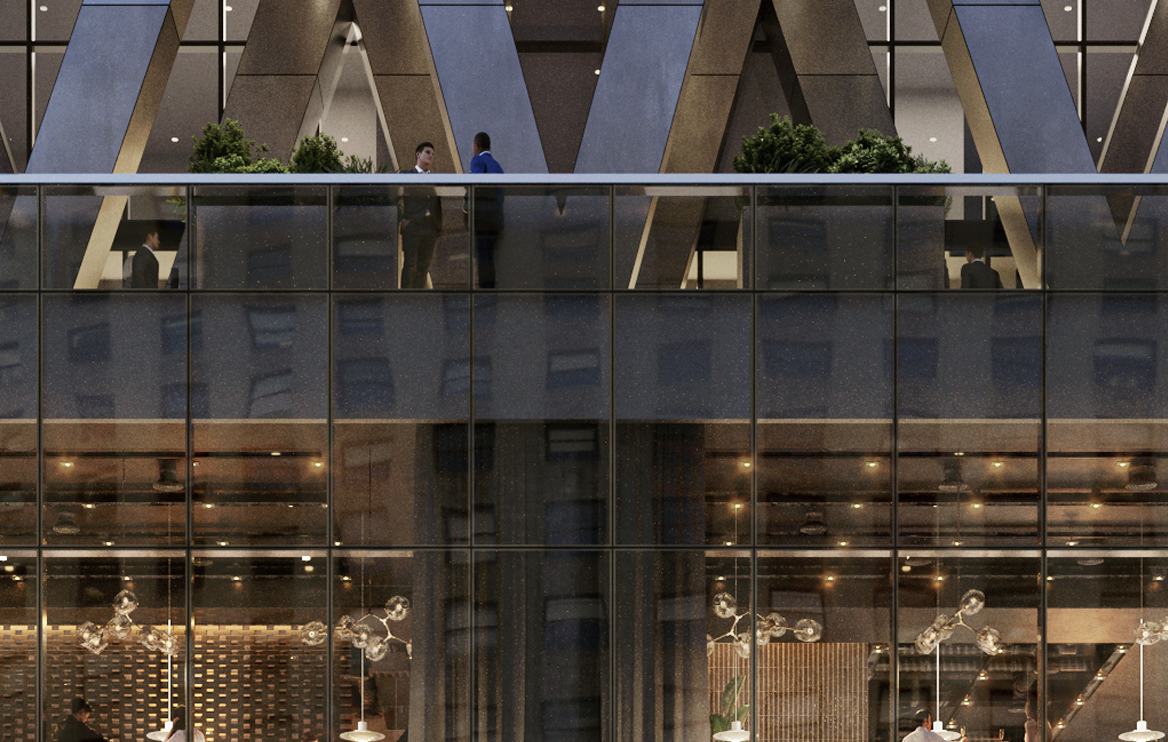
Here’s one subtle detail that impressed me: Binyan Studios slightly warped the reflection on each pane of glass to mimic the minute differences in glass density, curvature, and shape found in ‘real life’ curtainwalls. Despite appearances, each pane of glass – be it a single window in a historic building, or part of a sleek, modern curtainwall – is unique. But where did the reflection come from you ask? Well, I photographed it for them.
After I captured the first batch of frames focused on 300’s retail elevation, I crossed the street and pointed my camera eastward and began photographing the frames needed to create the panoramic stitch. But before I moved from my initial position, I very carefully marked the location of my tripod’s feet. Because after I shot the panorama, I crossed back over and took more frames of 300 N Michigan’s podium. To ensure proper alignment of the retail elevation images, this ensured I photographed from the exact same spot.
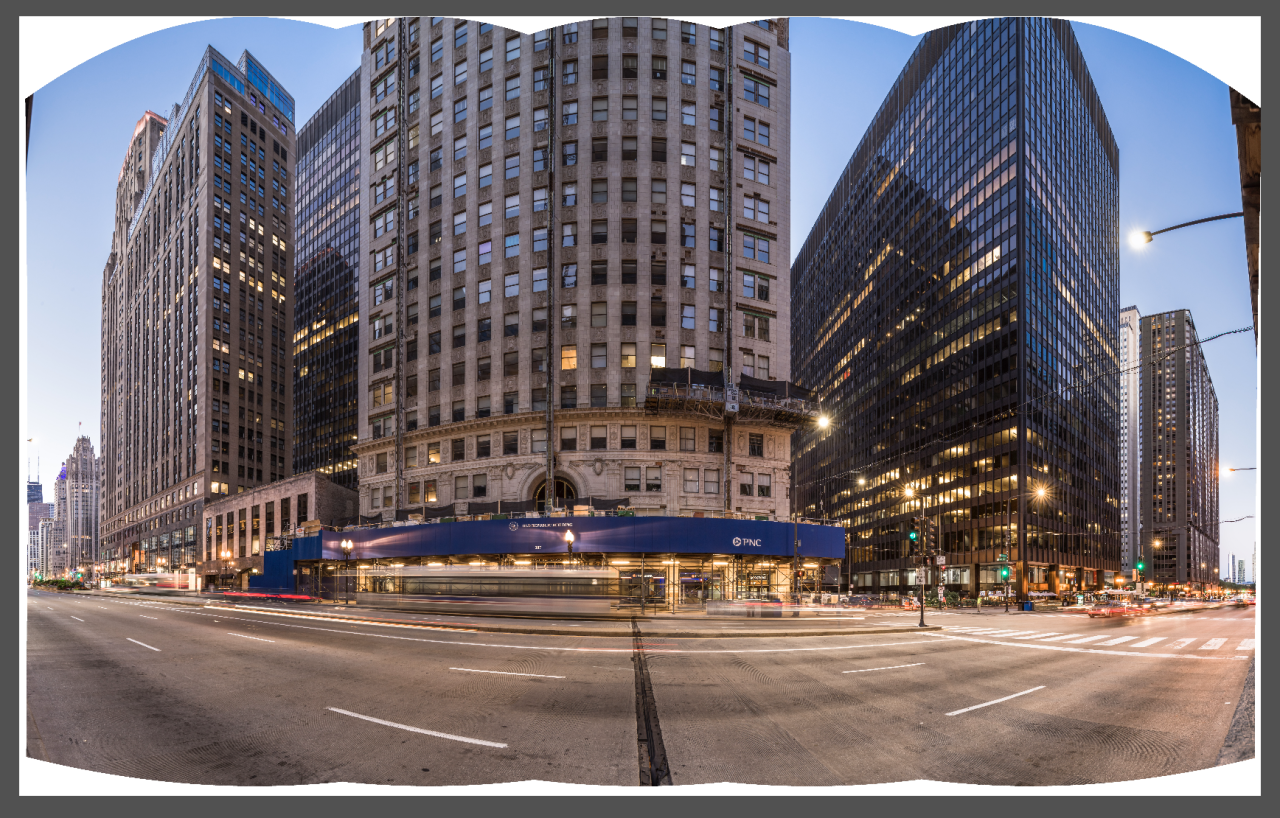
Reach out and let me know what you think! And don’t forget to check out a couple more of the interior renderings Binyan and Sterling Bay created.
And in case you missed it at the top of the post, here’s the final rendering once again.
